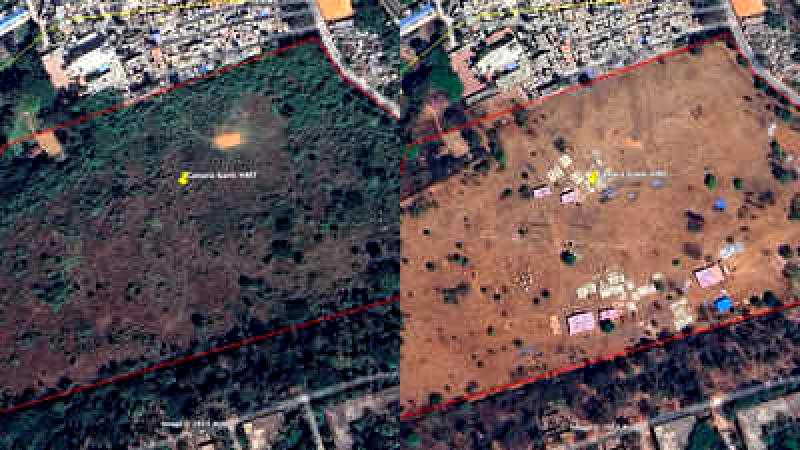
Aunt Flo's visit is typically a challenging time for most women. Picture dealing with the usual period cramps but intensified by an allergy to menstrual cycles. Yes, you read that right. Georgina Jelley, a 28-year-old resident of London, recently shared her unique medical condition where she is allergic to her monthly menstrual cycle, making her period struggles even worse as her body fights against this perceived threat.
You might be wondering, what could cause an allergy to periods? Have you observed skin issues or allergic reactions flaring up just before your period? This could indicate a progesterone hypersensitivity, a condition where the body reacts to increasing levels of progesterone, whether naturally during hormone cycles or from external sources like birth control. While this sensitivity can develop at any stage from puberty to menopause, some women experience severe symptoms, even risking life-threatening anaphylaxis. Recognizing the triggers and symptoms of progesterone hypersensitivity is vital for managing this often overlooked condition.
Understanding Progesterone Hypersensitivity:
Dr. Prachi Sarin Sethi, a Senior Consultant specializing in Obstetrics, Gynecology, and Laparoscopic Surgery at Motherhood Hospitals in Gurgaon, explains that progesterone, a steroid hormone crucial for menstrual cycles, pregnancy, and reproductive health, plays a key role in the body. Progesterone levels peak just before ovulation, reaching their highest point during the luteal phase of a typical 28-day menstrual cycle, about a week before menstruation begins, preparing the uterus for possible embryo implantation by triggering endometrial changes. If implantation doesn't occur, the drop in progesterone kicks off menstruation. Initially produced by the corpus luteum, the placenta later takes over progesterone maintenance during pregnancy, aiding gestation by reducing immune reactions, preventing uterine contractions, and delaying lactation until after birth. Moreover, it acts as an anti-inflammatory agent.This condition, known as progesterone hypersensitivity (PH), affects the body's response to progesterone and how it regulates immune reactions. PH can be classified into three types, each with its own triggers and symptoms:
1. Endogenous Progesterone Hypersensitivity: This type is associated with the body's natural increase in progesterone levels during the luteal phase of the menstrual cycle, occurring 3 to 10 days before menstruation. Symptoms may include skin reactions, respiratory issues, and allergic-like responses corresponding to the progesterone surge.
2. Exogenous Progesterone Hypersensitivity: This type results from the use of synthetic progestins in hormonal contraceptives or fertility treatments. Symptoms typically improve after discontinuing the progestin-containing medication, suggesting a direct link between the hypersensitivity and external progesterone source.
3. Mixed Progesterone Hypersensitivity: Mixed PH involves symptoms from both natural and external sources of progesterone, making management more complex due to the interaction between internal and external hormone influences.
Causes of progesterone hypersensitivity are not fully understood but may include genetic predisposition and hormonal imbalances. Genetic factors and hormonal fluctuations during the menstrual cycle can contribute to the development or exacerbation of symptoms in women with progesterone hypersensitivity.Increased sensitivity to progesterone occurs more prominently during periods of high levels of the hormone. Chronic stress can disrupt hormone balance, potentially leading to progesterone hypersensitivity. This sensitivity can be exacerbated by elevated levels of cortisol due to stress, affecting progesterone levels. Certain medical conditions like thyroid disorders or autoimmune diseases have been associated with a higher risk of progesterone hypersensitivity. These conditions can alter the body's immune response and hormone regulation, making it more reactive to both internal and external sources of progesterone.
Symptoms of progesterone hypersensitivity typically appear 3 to 10 days before the start of the menstrual period and usually lessen within 1 to 2 days after menstruation begins. Progesterone hypersensitivity can manifest in various symptoms, with skin reactions being the most common. These skin reactions, distinct due to their cyclical nature worsening with hormone fluctuations, may include eczema, hives, fixed drug eruption, erythema multiforme, and angioedema. In rare instances, severe symptoms like anaphylaxis can occur, requiring medical attention. Such symptoms may not immediately be associated with the menstrual cycle and often need a doctor's assistance to identify the pattern.Progesterone hypersensitivity is a condition often overlooked in women of childbearing age, despite its potential to cause significant health issues. The exact causes of this syndrome are still unclear, but the multitude of symptoms experienced by those with this condition suggests that it is a complex disorder. These symptoms can range widely and may include various skin reactions like dermatitis, hives, erythema multiforme, and fixed drug eruptions. In more severe instances, individuals may even experience bronchospasm or anaphylaxis, indicating a serious hypersensitivity reaction. Detecting progesterone hypersensitivity requires establishing a clear link between symptom onset and exposure to either natural or synthetic progesterone. Treatment for affected individuals, particularly those concerned with fertility or pregnancy, typically involves medical management using corticosteroids or desensitization therapy to alleviate symptoms.











